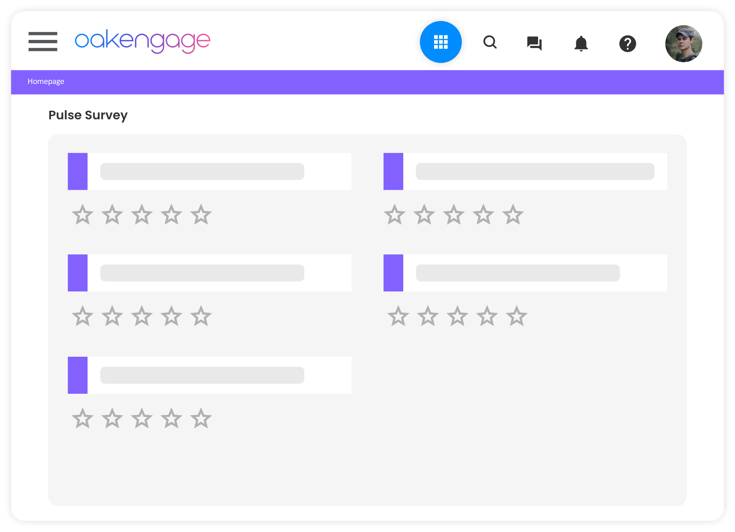When was the last time you audited your company’s internal communication?
If you've never conducted a communication audit or it’s been a while since you’ve conducted one, it might be time to take a look at whether your internal communication is making a difference.
In this blog, we’ll take you through a step by step guide on how to perform an internal communication audit, and we’ll provide you with a template to conduct your own.
Sounds great right?
Here’s what we’ll cover:
- What is an Internal Communication Audit?
- Why bother with an Internal Communication Audit?
- Performing an Internal Communication Audit: Step by Step Guide
- Internal Communication Audit Template
What is an Internal Communication audit?
Firstly, what is an internal communication audit?
Essentially, it evaluates the effectiveness of your internal communication.
When you have a clear picture of the impact that communication has on your audiences, you can determine whether it's serving the needs of the organisation or if it requires some changes.
Internal communication is about making your company transparent, efficient, inclusive, relevant and creates a real sense of belonging in your organisation.
Done well, it can have an incredibly positive impact on your workforce.
Why bother with an Internal Communication audit?
You might be thinking, my internal communication is great! Why should I bother with an internal communication audit?
Well, an audit is a key part of your strategic communication planning process.
It can help you identify what you might be missing with your internal comms. This could be:
- Gaps in information
- Messages that aren't reaching your audience
- Miscommunications
- Channels that aren't delivering the way you want them to
Did you know 74% of employees have the feeling they are missing out on company news?
Internal communication audits can help you measure performance and give you a roadmap to start allocating your resources more effectively.
Better yet, it provides data that informs the overall strategic direction of the organisation, demonstrating to senior managers that you understand the business and can contribute to its success.
Performing an Internal Communication audit
So where do you start?
You should start with the why - it’s vital to know why you’re doing the audit in the first place. Determine the purpose to keep you on track.
With your goal firmly in mind, audits can be a rewarding way to thoroughly assess how effective your internal comms is and identify any actions to take.
Important note:
Don’t underestimate the time it takes to collate and evaluate data and channels. If you want to conduct an audit, you will need to invest in effort, money and resources.
That being said, let’s take a look at the 9 steps to perform a successful internal communication audit:
1. Determine what will be included
First things first.
Do you have an existing internal communication strategy?
If you do, you could select the elements that are the most critical to its success in the areas where you are making the biggest investments.
Make a list of the items, channels or audiences you want to evaluate through the audit.
Examples of what you can evaluate could include:
⭐️ Channel effectiveness - are your employees opening your emails or seeing your messages? What do employees seem to prefer?
⭐️ Leadership communication - Management rarely has a common definition of the purpose and value of internal communication. There might be a gap between how effective they view their own communication compared to what employees think. How will you address this?
⭐️ Employee awareness - are your employees hearing you?
⭐️ Resources required - are departments asking for internal resources?
2. Timing: How long it will take
You should always speak to your leadership and/or any decision makers to identify any potential restrictions before beginning your internal communication audit.
For example, some industries will likely have increased levels of compliance or restrictions.
Timing can vary across different industries in terms of how long your internal communications audit will take.
You will need to take into account when yearly budgets for your company are decided. This will also have an impact on when you’ll be able to start implementing your strategy.
3. Get leadership buy-in
Your senior management will need to be actively involved in the creation of your internal communications strategy. They will play a key role in how it’s delivered to the rest of the company.
It’s important to mention that it's not enough to leave it up to the HR and Marketing Teams to define and execute your plan.
You need your leadership to be involved in the audit process and have the desire to implement any changes based on what you find.
Here are a few ways you can make sure your leadership is involved:
- Make it easy for them! Putting together a written plan that sets out your evidence will massively help you to embed your message to leadership.
- Depending on your company, you may find there are processes and existing templates to be used when bringing together an audit.
- Show how great internal comms can help the company promote, focus on and deliver existing goals.
Recommended reading📖: Intranet business case (step by step guide & template)
4. Select your audience: Have an appropriate representation
You should make sure that you get a diverse set of views from across your organisation, including employees from:
- All business areas
- Different roles
- Various locations
- All levels.
5. Communicate the fact you’re doing it
Before you get into the feedback from your employees, it would be a good idea to share with the company exactly why you are asking people to participate in the audit.
You should also address what you plan to do with their feedback.
Here’s an example of what you could say to your employees:
“Hi (Insert Name)
We’ve selected a small group of employees at random to participate in an audit of the quality and effectiveness of our company’s internal communication strategy, channels, and messages. We’d love to hear your opinions on what’s working well, and where we can improve!
Your feedback will help us to deliver relevant, meaningful communication that supports the employee experience and the company’s goals. It will also help to clarify the key role that managers and leaders play in this communication, and identify what they need to do this well.
Our audit will kick off next Monday with a short 15-minute meeting. Let me know if you cannot attend or if you do not wish to participate!”
It would be a good idea to communicate this information on a platform that your employees use the most. This could be sending direct messages on your company intranet.

6. Determine how you will collect your employees’ and stakeholders insights
There are various ways that you can collect information from your employees.
These could include:
Collecting quantitative data - Using a survey to measure employee satisfaction and perceptions around the effectiveness of internal communication
You can create and launch a poll or pulse survey with ease for better engagement rates within your company. All in a matter of minutes.

Try to keep your survey concise: it should take no more than 1-15 minutes to complete. Depending on what you're evaluating in your survey, here are some examples of what you could ask your employees:
- How do you currently receive communication about the company?
- What is your preferred way of receiving communication about strategic business priorities/work processes etc?
- What do you think the effectiveness of communication is right now?
- What is the quality of communication you receive?
- Collecting qualitative data - Through one-on-one meetings and/or focus groups you can dig a little deeper and uncover more detail about employees needs, expectations and effectiveness of your internal comms strategy from different employee groups.
Collecting qualitative data - Through one-on-one meetings and/or focus groups you can dig a little deeper and uncover more detail about employees needs, expectations and effectiveness of your internal comms strategy from different employee groups.
Focus groups and interviews are particularly useful for exploring people’s attitudes and feelings and for drawing out issues and reactions to specific themes and aspects of your internal communication strategy and approach.
Review existing internal comms practises and processes - You can do this to uncover any gaps that could inform your research approach. This could include existing strategies and plans, your communication channels and key message delivery.
7. Review your data
Pull together everything you’ve documented so far.
You should be as objective and transparent as possible about the company's successes and opportunities.
Draw conclusions from the data you’ve collected and combine your findings in a report that should include:
- Overview of your research and why it was conducted
- Summary of your findings
- Analysis of employee opinions
- Recommendations for improvement
8. Put together your action plan
When you start to put together your action plan, focus on small improvements that can be made quickly and generate meaningful results.
This will help build positive momentum for your solution.
From there you can start planning for changes that have the biggest impacts on areas of concern for your company.
Build the plan in segments of:
- 3 months
- 6 months
- 12 months
- 18 months
When should you review it?
We recommended incorporating a formal plan and review every quarter and plan on doing your net audit in 18 months.
Recommend reading📖: Internal Communication plan: A step by step guide
9. Publish the report
The final step in conducting an internal communication audit is to communicate it.
This is important for your employees and stakeholders, especially those who participated in the research stage.
Make sure you tell people what you've discovered and how you plan to address it.
Not sure how to structure it?
Here’s an example layout of how you could structure the report:
- Start with the executive summary and include your final conclusion.
- Describe the problem you’re solving and why they should care.
- Explain the current state, and what the company is doing about it.
- What’s the benefit?
- What is your proposed solution?
- What’s the cost of the solution?
- What’s the cost of doing nothing?
- How will it be executed?
- What is the action plan?
Internal Communication audit template
Are you ready to take the next step? Download your own internal communication audit template.
Simple and easy to follow, the template will get your planning off to the best possible start! Download here.
Change the way you work. Empower your people
We offer a free and personalised demo service, showcasing our intuitive and easy to use platform.


